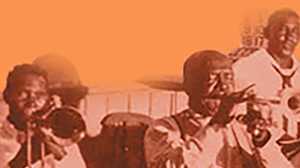Ruby Bridges and Integration of New Orleans Schools

On November 14, 1960, a 6-year-old girl walked into William J. Frantz Elementary School in New Orleans. That seemingly mundane moment would shake the community and change the city forever.
Path to Integration
Before a first-grader named Ruby Bridges entered that school, the state of Louisiana had tried to stop her and other black students from enrolling in all-white schools. After the Supreme Court's 1954 Brown v. Board of Education decision mandated desegregation of public schools, Louisiana and many Southern states passed laws to close schools facing racial integration. After those laws were overturned by the federal courts, the day finally came when the promise of Brown v. Board of Education would be met in New Orleans.
First Day
Federal district judge J. Skelly Wright ordered desegregation to begin on November 14. On that day three black girls began first grade at the McDonough school and Bridges at William Frantz. With integration came protest and upheaval. A local citizens' council called on white parents to boycott the schools, with one leader of the organization saying they must "do something" before "burr-heads are forced into your schools." When Bridges, who was guarded by marshals, arrived, she encountered mobs of white parents, who shouted racial epithets and threats. Integration supporters, including NAACP leaders and white activists, faced death threats. Bridge's father was fired from his job, and the white owners of a grocery store refused to allow her family to shop. By the end of the week, only three white families remained in the Frantz school; all white parents had removed their children from McDonough.
Suburban Flight
Protests dwindled as the school year continued, and by the time Bridges began second grade the next year, she was joined by a few other black students as well as returning white students. But school integration also coincided with an exodus of middle-class white families to the suburbs, where developments were built during the 1960s. The black population of New Orleans rose from 37 percent in 1960 to 45 percent in 1970, and became a majority of 55 percent by 1980. Ten years after Bridges and three other girls became the first black children to attend New Orleans public school, more than 70 percent of the students in the public school system were black.
University Integration
Shortly after New Orleans public schools desegregated, the city's most prestigious institution of higher learning faced the same issue. Tulane University had been a segregated institution for its 129-year history until February 1963, when 11 black students enrolled. They arrived after a lawsuit was filed against the university, maintaining that Tulane's involvement with the state precluded its private status. While a decision in favor of Tulane was on appeal, the university's board voted to admit black students. Rosa Keller, a white activist and president of the local Urban League who helped initiate the lawsuit, said at the time, "I think a lot of people realized that Tulane would be irreparably damaged if they didn't go on and do what they all knew by that time they had to do." When it came to integration, she could have said the same thing about New Orleans itself.







